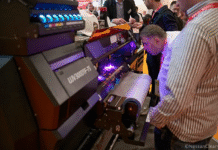The Indian print industry is highly unorganized and businesses are mostly family owned. Due to the fragmented nature of the industry, it lacks the scale to optimize the efficiencies in operations. Therefore, the recent acquisition of NCR-focused Print Bazaar by Bengaluru-based quick print chain Printo is significant as it points to that fact that some players in the industry are now focusing on economies of scale as the industry gradually strives to get more organized and professional, signaling growth in consumption-led demand.
“The acquisition will help us achieve the economy of scale and be part of a platform that serves customers at a pan-India level. It will help us grow in larger geographies. Large corporates want a single supplier. National presence will help us cater to the needs of both SMEs and these large corporate,” says Manish, Sharma, co-founder and chairman, Printo.
The financial details of the transaction were not disclosed but Economic Times, citing sources, reported that the deal values Print Bazaar at around Rs. 8-10 crore. Print Bazaar has built a strong retail brand in New Delhi and Gurugram while Printo currently dominates the markets in Bengaluru, Hyderabad, Pune and Chennai. This acquisition will help Printo deliver print solutions to its customers in a territory which it hitherto served only remotely via its website.
“With Print Bazaar, Printo is finally a national retail brand,” says Sharma.
For Sanjeev Malhotra, the deal marks his fourth exit. A serial entrepreneur, Malhotra is the chief executive of Alia Group, the parent company of Print Bazaar. He says, “Collaboration is the new competitive advantage. It is very clear you cannot do without it. We had a strong footprint in the northern region while Printo had a strong presence in the southern region. So, it was natural for us to look at the alliance to get the competitive advantage.”
Malhotra believes coming together of Printo and Print Bazaar will generate obvious synergies in the form of stronger purchasing power, bigger brand, better processes, better pricing for consumers, and professional print services to name a few.
At least 20 stores in North India
Printo is creating India’s largest print network with a presence in six cities, through a combination of 30 stores and regional hubs spread across six cities. In the near future, Printo would be investing Rs 10 crore, primarily for setting up a North India production facility (which is called the hub in Printo) and the rest in setting up company-owned stores.
“Our large customers have nudged us towards delivering at a national level and we owe this ambitious growth partly to them and partly to our team, which seems ever ready to take up challenges of growth. We are still a small company but we believe we are laying the foundation for becoming India’s largest consumer and business print brand,” shares Sharma.
Printo would be using the NCR region as a base to expand into the rest of North India, just as it has done in the southern part of the country. In the next five years, Sharma sees at least 20 stores in North India.
Asked if the print industry would see more consolidation going forward, Sharma says that the print industry is facing an excess capacity problem so consolidation will only happen if one has a good customer base. “For the typical printer too, it makes sense to run the business and generate cash from the business through business expenses rather than be acquired at a low multiple. I feel consolidation is a reflection of how mature an economy is. In India, we have a long way to go as there is enough inefficiency, which incentivizes businesses to be small, rather than large. A consolidator, or acquirer, is either looking for customer base or production capability.”
Omni channel is real for Printo
Printo has always been significantly digital inside, with all stores connected to a central hub and real-time monitoring of jobs. It is now investing in enhancing its mobile and web capabilities since a large number of existing customers place orders online and pick up at stores at their convenience. Omni channel is real for Printo and integrating the customer experience across channels is key, argues Sharma.
For example, Printo’s customers can order via a mobile app or the website and pick up at a store the same day or have it delivered to their office or home. This is a rapidly changing environment which Printo is leveraging.
A consumption-led industry
According to Sharma, in all emerging markets print and retail print are growing at double digits. This is a consumption-led industry and with increasing consumerism retail print is booming. On the business front, SMEs, individual consultants, start-ups and free agents are driving this growth. On the consumer side, the desire to share and celebrate memories (thanks to the explosion in photos and social media) is pushing photo products as a category. Internationally funded players like VistaPrint and PrintVenue are good examples.
“Printo believes that big growth lies in combining instant gratification with omni-channel,” Sharma concludes.

















This was a great read, learned something new!